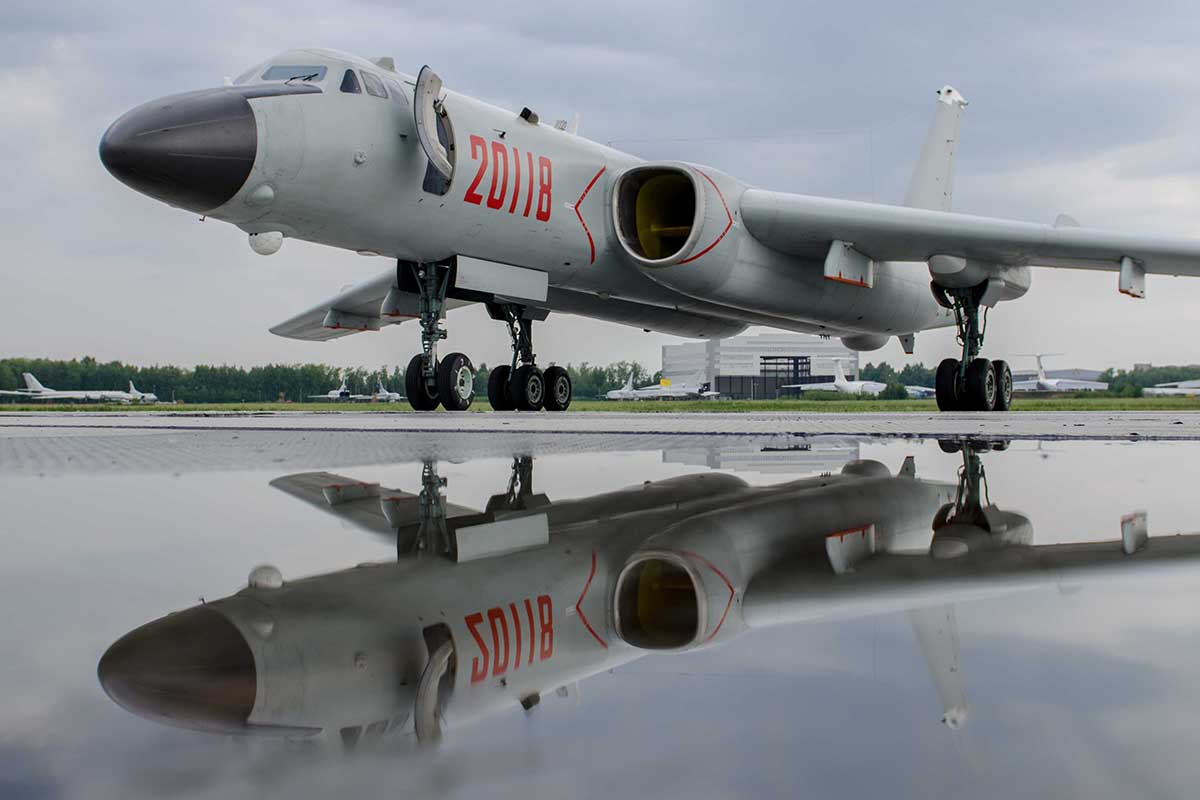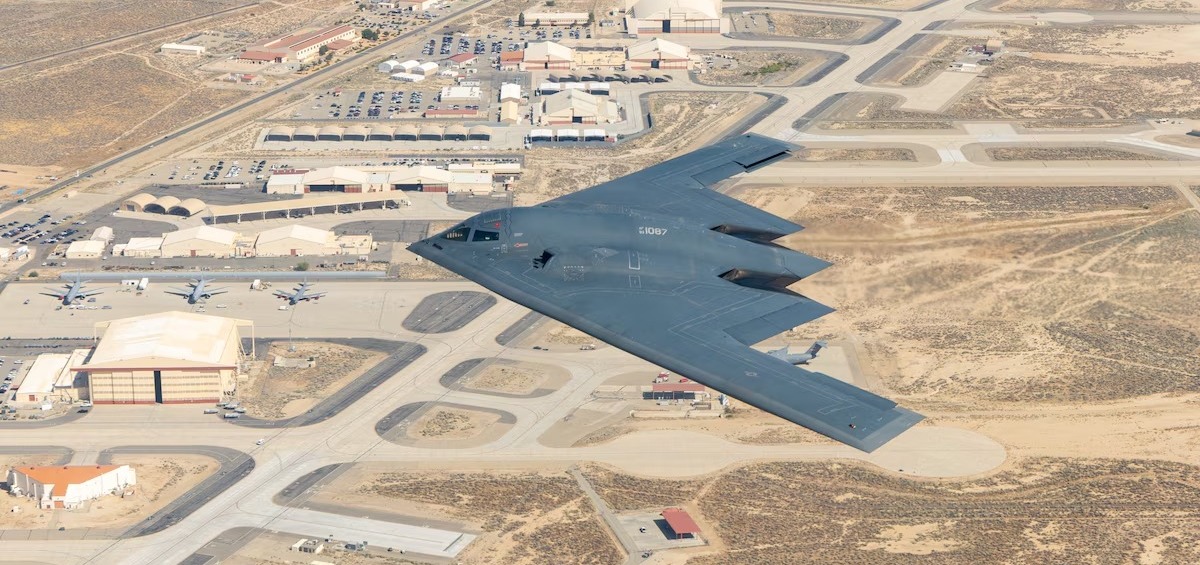Satellite images from Maxar Technologies, taken on March 24, 2025, have revealed China’s deployment of H-6 bombers near the contested Scarborough Shoal, a flashpoint in the South China Sea.
Scarborough Shoal, within the Philippines’ EEZ, has been under Chinese control since 2012, despite a 2016 Hague ruling invalidating Beijing’s claims, which China continues to reject.
China did not formally announce the deployment, yet it coincided with U.S. Defense Secretary Pete Hegseth’s visit to Manila. The timing suggests that China is reinforcing its territorial claims through a show of strength.
During his visit to Manila, U.S. Defense Secretary Pete Hegseth reaffirmed Washington’s “ironclad” commitment to the treaty and announced plans to deploy additional advanced capabilities to the Philippines.
The U.S. will provide the NMESIS anti-ship missile system and unmanned surface vehicles to strengthen Manila’s deterrence capabilities against regional threats. Hegseth also confirmed that the two nations would conduct special forces training exercises on the northernmost Philippine islands of Batanes, near Taiwan.
Hegseth emphasized that U.S. President Donald Trump seeks peace but that deterrence remains necessary.
“President Trump seeks peace … but in order to bring that peace, we will be strong.”
Hegseth said this during a joint press conference with Philippine Defense Secretary Gilberto Teodoro. The statement came amid rising tensions between Manila and Beijing, particularly over the South China Sea, where China has repeatedly challenged the Philippines’ maritime patrols.
At the heart of this tension lies the Scarborough Shoal, a coral atoll that has become a symbol of simmering tensions. Since seizing control of the shoal in 2012, China has fortified its presence, much to the dismay of the Philippines, which asserts that the shoal lies within its exclusive economic zone (EEZ).
The dispute over the shoal encapsulates the broader struggle over maritime sovereignty in the South China Sea, where multiple nations, including Vietnam, Malaysia, and Brunei, have competing claims. Frequent confrontations between Chinese vessels and Philippine fishing boats highlight the region’s volatility.

China’s Show Of Strength In The South China Sea
The Xi’an H-6 is a twin-engine jet bomber derived from the Soviet Tu-16, which first entered service in 1952. The H-6 was key to China’s nuclear program, dropping nine nuclear devices at Lop Nur, including a thermonuclear bomb in 1967.
By 1968, China produced its first H-6 domestically, shifting its role from nuclear deterrence to conventional and cruise missile strikes.
The first fully domestically produced H-6 flew in 1968. It initially served as a strategic nuclear bomber before transitioning to conventional bombing and cruise missile delivery. Around 230 H-6 bombers have been produced.
The aircraft operates with a four-person crew and has evolved with modern variants. The H-6K variant, introduced in 2009, features a reinforced airframe, advanced avionics, and Russian Soloviev D-30 turbofan engines, extending its combat radius to 3,500 kilometers. It also has a glass cockpit, upgraded radar, and an electro-optical targeting system.
Its deployment is part of a broader Chinese strategy in the South China Sea, where Beijing has increased its military footprint, including artificial islands fortified with radar installations, missile systems, and airstrips.
Chinese naval patrols frequently clash with Philippine and Vietnamese forces. Beijing justifies its claims using the ‘nine-dash line,’ a disputed boundary covering most of the South China Sea. Despite international rejection, Beijing continues to assert sovereignty over the contested waters, citing historical ownership.
U.S. Military Movements In The Indo-Pacific
While China is flexing its ‘bomber’ muscles in the South China Sea, interestingly, the United States is boosting its stealth bomber fleet in the Indo-Pacific region.
Reports confirm that five to seven B-2 Spirit stealth bombers have been deployed to Diego Garcia, a strategic base in the British Indian Ocean Territory. The base has long served as a launchpad pad for U.S. air operations across the Middle East and Indo-Pacific, offering a secure location to project air power.
The B-2 Spirit is one of the most advanced stealth bombers in the U.S. arsenal. It was designed in the 1980s for deep-strike missions in contested airspace. With its flying-wing design and radar-evading capabilities, the B-2 is nearly invisible to enemy air defenses. It can travel 9,600 kilometers without refueling.
The U.S. military base Diego Garcia plays a key role in U.S. military operations. In addition to hosting bombers, it serves as a logistics hub for maritime forces operating in the Indian Ocean.
The base was central to U.S. air campaigns in Iraq and Afghanistan and remains critical for rapid-response operations. The presence of B-2 bombers in Diego Garcia shows that Washington is willing to maintain a strategic advantage in the Indo-Pacific while also preparing for potential contingencies in the Middle East.

The U.S. military is currently engaged in operations against Houthi militias in Yemen, who have escalated their missile and drone attacks on the U.S. and its allies. These attacks include strikes on Israeli territory and U.S. naval assets in the Red Sea and Gulf of Aden.
In response, the U.S. has conducted multiple airstrikes targeting Houthi command centers, missile launch sites, and weapons storage facilities. The latest large-scale strike occurred on March 16, 2025, as part of a broader effort to disrupt the Houthis’ ability to attack commercial and military vessels.
In October 2024, B-2s were utilized to destroy underground weapons depots in Yemen, demonstrating their capability for precision airstrikes. The latest deployment suggests that Washington is prepared to conduct further operations if Houthi attacks continue.
These developments have significant strategic implications. Both China and the United States are projecting air power in regions critical to their respective security interests.
For Beijing, the presence of H-6 bombers near Scarborough Shoal reinforces its territorial claims and signals resolve in the South China Sea. For Washington, the deployment of B-2 bombers to Diego Garcia demonstrates its ability to respond to threats across multiple theaters simultaneously.
As a former Indian fighter pilot, MJ Augustine Vinod points out, What’s significant here is that the US didn’t just park F-15s or carrier strike groups—it flew in the B-2s. These are not routine deployments. Each B-2 carries nuclear and conventional precision munitions. The optics of this move are crystal clear: deterrence through capability, not words.
Diego Garcia’s remote location, far from civilian populations and vulnerable political optics, makes it the perfect black-box base for such operations. The B-2’s ability to conduct missions without support aircraft reduces its footprint, enhances surprise, and leaves adversaries, including China, guessing.
Regional Tensions
Regional allies are closely watching these moves. The Philippines, which has faced increasing Chinese pressure over its maritime claims, has strengthened its military ties with the U.S. through the 1951 Mutual Defense Treaty. The presence of American bombers and the ongoing U.S. military engagement in the Pacific could provide reassurance to Manila.
Japan and Australia have also increased their defense coordination with Washington in response to growing Chinese assertiveness. Meanwhile, Vietnam and Malaysia continue to express concerns over Beijing’s territorial ambitions and military activities in the South China Sea.
Beyond the Indo-Pacific, U.S. actions in the Middle East have broader geopolitical implications. Iran and Russia are closely monitoring the situation, with Tehran backing Houthi forces in Yemen and Moscow maintaining a strategic partnership with Beijing.
The intersection of these conflicts highlights the complexity of global military competition, where rival powers test each other’s resolve across multiple regions.
- By: EurAsian Times News Desk
- Mail us at: editor (at) eurasiantimes.com




